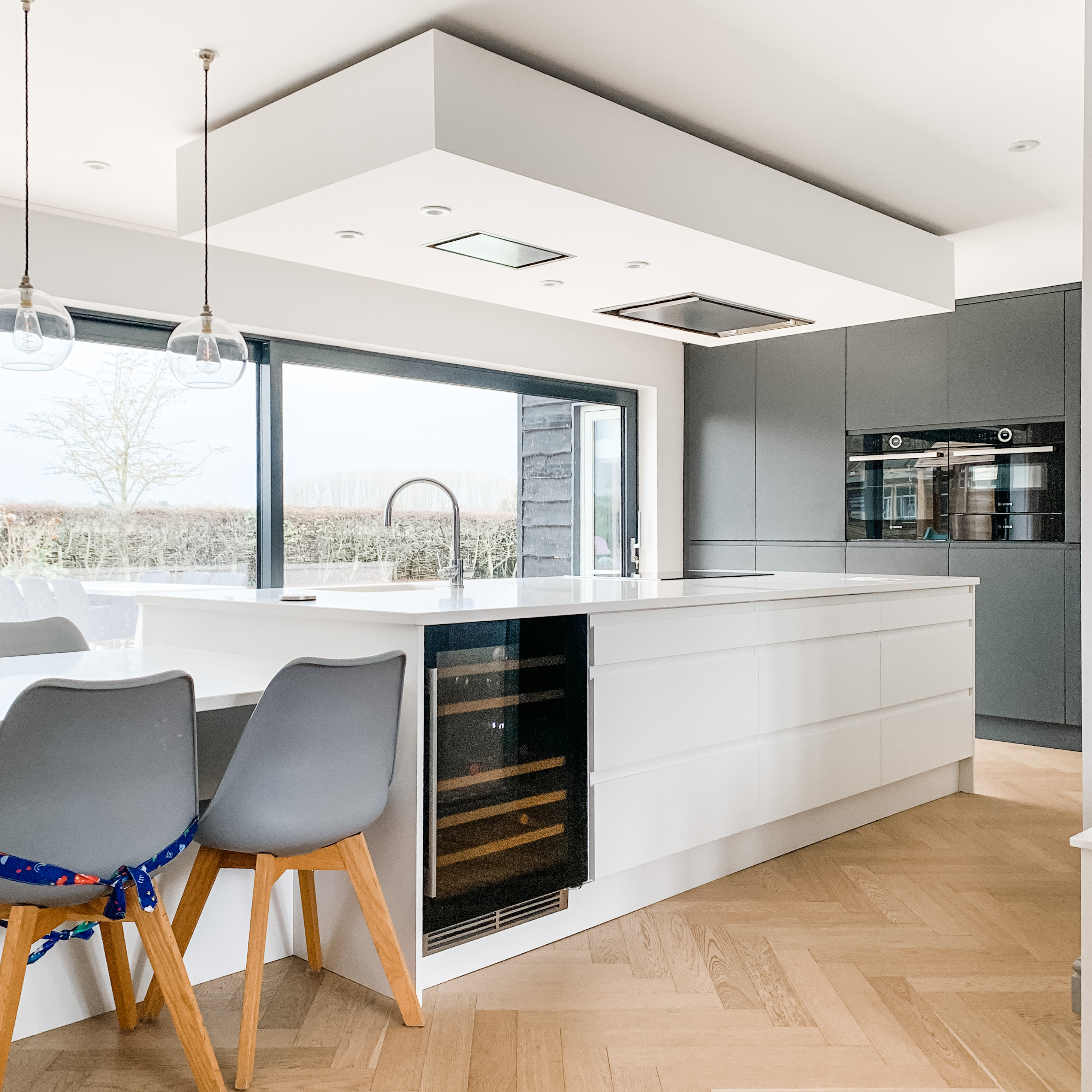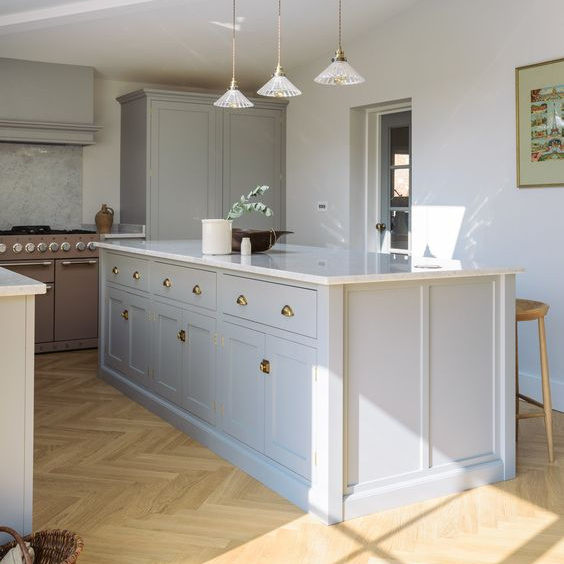Engineered Wood Flooring in the Kitchen
4th Aug 2021
Engineered wood flooring can add warmth and timeless appeal to your kitchen and is the perfect finishing touch to both contemporary and traditional kitchen designs. Thanks to the clever layered construction of engineered wood flooring, it is suitable for most areas of the home, including the kitchen, however there are a few points to consider when opting for a wooden kitchen floor.
Is engineered wood suitable for the kitchen?
Engineered wood is made up of various layers, which is what makes it far more durable and stable than a traditional solid wood floor, not to mention more sustainable!
The top layer of an engineered wood floor is made up entirely of solid wood (here at The Wood Flooring Co. all of our floors have an oak top layer), which is bonded to a layer of incredibly strong plywood beneath and a stabilising counter layer. This layered design balances out the tensions in the wood and in turn prevents the wood from bending or swelling in areas of changing moisture, such as the kitchen.
All of the planks in our engineered wood collections have all been pretreated with either a natural oak or a matt lacquer. For a kitchen floor, you may want to opt for a matt lacquer surface finish which will give a slightly tougher more resilient finish. However an oiled surface finish is the better option if you plan to sand or retreat your wood flooring in the future, so both options are popular.
Choosing the right engineered wood floor style for your kitchen design
As a natural material, wood flooring is the perfect pairing for all manner of kitchen styles. It can be the perfect finishing touch for classic shaker-style kitchens, but can also add warmth and longevity to more modern, streamlined designs. The kitchen featured below is a stunning example of a modern kitchen design paired with a classic parquet floor to create an overall timeless style.

Featured: Woolacombe Oak Parquet engineered wood
Parquet engineered wood flooring designs including herringbone and chevron are hugely popular in kitchens since they add contrast and interest to otherwise straight sight lines. Parquet flooring looks particularly stunning in larger kitchens with a central island which breaks up the floor space.
If you prefer to keep your flooring more streamlined, straight planks work equally as well and can have the effect of making a space seem larger than it actually is. Smaller kitchens or galley styles work particularly well with straight wooden planks which will add a sense of space and a smart finish to the room.
Open plan kitchens which incorporate more than one living space can pull off an extra large plank design. Larger planks are steadily growing in popularity amongst specifiers and homeowners looking to add a clean and contemporary edge to their property.
Maintaining your new wooden kitchen floor
When properly maintained, a wooden floor will last for years in the kitchen - however, there are some points to bear in mind to keep it looking its best. You can read our full post about caring for your engineered wood floor here.

Image credit: DeVOL Kitchens
1. Mop up spillages
Although engineered wood flooring is less susceptible to water damage compared to solid wood flooring, water can still seep into the wood through prolonged exposure and cause unwanted damage. Ensure you mop up any spillages as soon as possible and never leave standing water on the surface. Be extra cautious around the sink area and any appliances such as dishwashers where spillages can often occur.
2. Use entrance mats
Use mats at entrance ways to trap dirt and grit, as these can cause micro scratches to a wooden floor. Leave your shoes at the door and opt for slippers!
3. Be mindful of sunlight
Due to it being a natural material, the tone of your wood floor will change slightly over time. Sunlight in particular will change the colour of your floor and different species of wood will react in different ways. If your kitchen has a lot of sun exposure throughout the day, you may want to consider blinds or shutters, or rearranging your furniture to ensure that the colour remains even across the floor throughout its lifetime.
4. Cleaning
Regular vacuuming or sweeping with a soft bristled brush will help to keep your floor free from grit and other dirt and in turn prevent your floor from unwanted scratching and staining.
Avoid mopping wherever possible, however if you do feel your floor needs a deeper clean ensure that your mop is wrung out as much as possible and water does not sit on the surface of the floor.
For more detailed care instructions, please see our maintenance guides on each product page.

